

relatively high tornado o
 ccurrence in the central U.S.
ccurrence in the central U.S.During the spring in the Central Plains, thunderstorms frequently develop along a dry line, which separates very warm, moist air to the east from the hot, dry air to the west.
Along the front range of the Rocky Mountains, in the Texas panhandle, and in the southern High Plains. Tornado-producing thunderstorms may form as the dryline moves east during the afternoon hours. If other favorable conditions exist, these thunderstorms may grow to severe strength producing hail, strong winds and tornadoes. Tornadoes are most likely to occur between 3 and 9 p.m. but have been known to occur at all hours of the day or night.
What to Look and Listen For
Dark-often greenish sky,
Wall cloud, Large hail
SEVERE THUNDERSTORM WARNING: Severe thunderstorms are occurring.
TORNADO WARNING: A tornado has been sighted or indicated by weather radar. If a tornado warning is issued for your area and the sky becomes threatening, move to your pre-designated place of safety.
What to Do if You're Caught in the Alley
If you are under a tornado WARNING, seek shelter immediately!
If you are in a structure (e.g. residence, small building, school, nursing home, hospital, factory, shopping center, high-rise building): Go to a pre-designated shelter area such as a safe room, basement, storm cellar, or the lowest building level. If there is no basement, go to the center of an interior room on the lowest level (closet, interior hallway) away from corners, windows, doors, and outside walls. Put as many walls as possible between you and the outside. Get under a sturdy table and use your arms to protect your head and neck. Do not open windows.
A vehicle, trailer, or mobile home:Get out immediately and go to the lowest floor of a sturdy, nearby building or a storm shelter. Mobile homes, even if tied down, offer little protection from tornadoes.
The outside with no shelter: Lie flat in a nearby ditch or depression and cover your head with your hands. Be aware of the potential for flooding.Do not get under an overpass or bridge. You are safer in a low, flat location.
Never try to outrun a tornado in urban or congested areas in a car or truck. Instead, leave the vehicle immediately for safe shelter.
Watch out for flying debris. Flying debris from tornadoes causes most fatalities and injuries



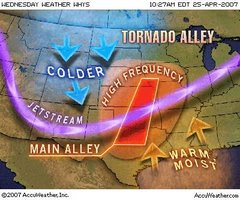
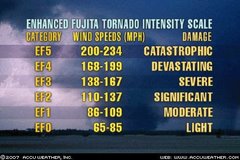


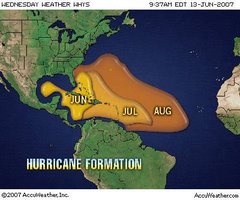
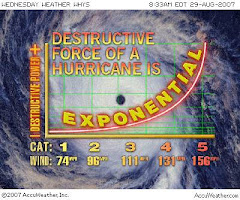
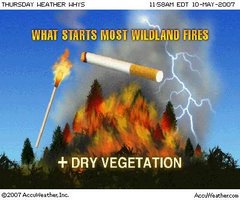
No comments:
Post a Comment